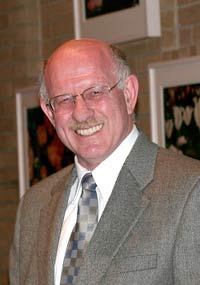
Handy Links
SLAC News Center
SLAC Today
- Subscribe
- Archives: Feb 2006-May 20, 2011
- Archives: May 23, 2011 and later
- Submit Feedback or Story Ideas
- About SLAC Today
SLAC News
Lab News
- Interactions
- Lightsources.org
- ILC NewsLine
- Int'l Science Grid This Week
- Fermilab Today
- Berkeley Lab News
- @brookhaven TODAY
- DOE Pulse
- CERN Courier
- DESY inForm
- US / LHC
SLAC Links
- Emergency
- Safety
- Policy Repository
- Site Entry Form

- Site Maps
- M & O Review
- Computing Status & Calendar
- SLAC Colloquium
- SLACspeak
- SLACspace
- SLAC Logo
- Café Menu
- Flea Market
- Web E-mail
- Marguerite Shuttle
- Discount Commuter Passes
-
Award Reporting Form
- SPIRES
- SciDoc
- Activity Groups
- Library
Stanford
Around the Bay
Dorfan Today: Planning the Future of Particle Physics
 Competition for U.S. federal funds to support major scientific endeavors has never been keener.
Each major field of science must present compelling scientific arguments, backed by sharp-edged peer
review and strong community support, to justify their federal budgets. This is as it should
be—"entitlement" is no way to run a scientific railroad.
Competition for U.S. federal funds to support major scientific endeavors has never been keener.
Each major field of science must present compelling scientific arguments, backed by sharp-edged peer
review and strong community support, to justify their federal budgets. This is as it should
be—"entitlement" is no way to run a scientific railroad.
We are in the midst of two major elements in the future planning for the field of particle physics. Last week the Particle Physics Project Prioritization Panel (P5) met both at Fermilab and at SLAC and this week's major event is the release of the final report of the National Academies Committee on Elementary Particle Physics in the 21st Century ("EPP2010") at a public briefing on Wednesday, April 26, 2006.
The Particle Physics Project Prioritization Panel (P5), a subpanel of the High Energy Physics Advisory Panel, has been charged by its parent bodies the Department of Energy and the National Science Foundation with developing a detailed roadmap and a set of priorities for the field of particle physics. The roadmap will cover roughly the next 10 years and should address priorities both for the support of ongoing programs and the investments needed near-term for new projects. Thus the role of P5 is very important to our future and it is our obligation to help P5 to be successful. P5 is made up of eighteen physicists from the US, one from Europe and one from Japan and includes SLAC's Joanne Hewett and Tor Raubenheimer. P5 will submit a detailed report to DOE and NSF by September 2006.
At Fermilab, P5 reviewed the main elements of Fermilabís operating program and future opportunities in neutrino physics, including the Enriched Xenon Observatory and dark matter searches, including GLAST and ILC. The meeting at SLAC examined the future research and development on the International Linear Collider and opportunities in dark energy science, such as the Large Synoptic Survey Telescope (LSST) and Supernovae Acceleration Probe (SNAP), as well as operations of our B Factory. The SLAC meeting was very lively and included an excellent set of presentations. You can view the presentations online, including mine which was focused on the specific questions posed to us by P5. We will not know the outcome of last week's discussion before early summer.
However, we will hear from EPP2010 this week by audio stream and next week from its chair in person at SLAC. The EPP2010 was convened to identify the most compelling science questions in elementary particle physics and to recommend a prioritized implementation plan of future projects to address them (unlike P5, EPP2010 was not charged to look at the current operating program). I am very excited to hear what this panel has to say, as it will have a large influence on the way the field of particle physics develops over the next ten years. Like all of you I do not know what is contained in their report, but I am optimistic that it will strongly endorse those elements that we at SLAC have touted so forcefully—namely the ILC, increased investments in particle astrophysics, and the critical importance of investments in advanced accelerator physics.
The live audio stream of the first public presentation of the EP2010 committee's findings will be available online at 11:30 a.m. this Wednesday. Here at SLAC, we are very privileged to have EPP2010 committee chair Harold T. Shapiro, president emeritus and professor of economics and public affairs at Princeton University, coming to talk about his panel's recommendations at 10:30 a.m. on Friday, May 5. I urge all of you to attend this talk whether your interests are in particle physics or other science, as the influences of this report will be felt throughout the world of science.
—Jonathan Dorfan SLAC Today, April 24, 2006